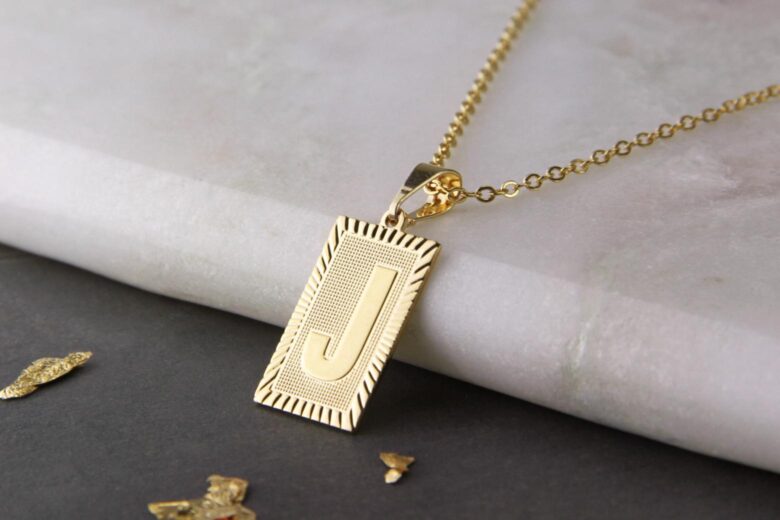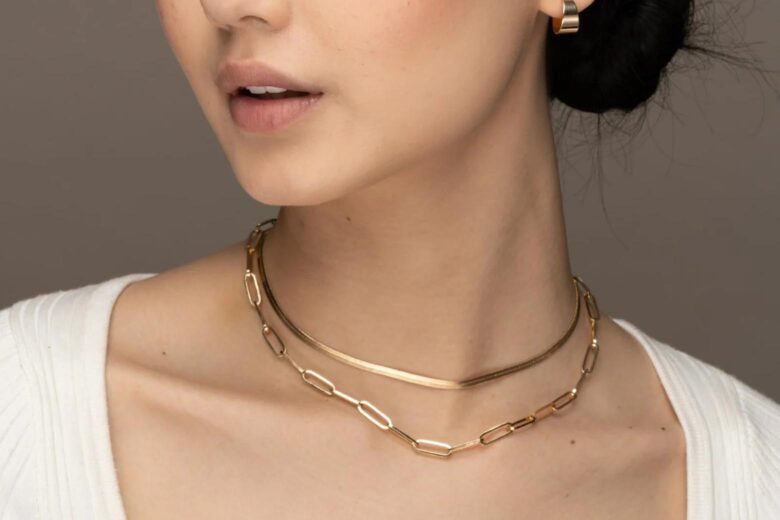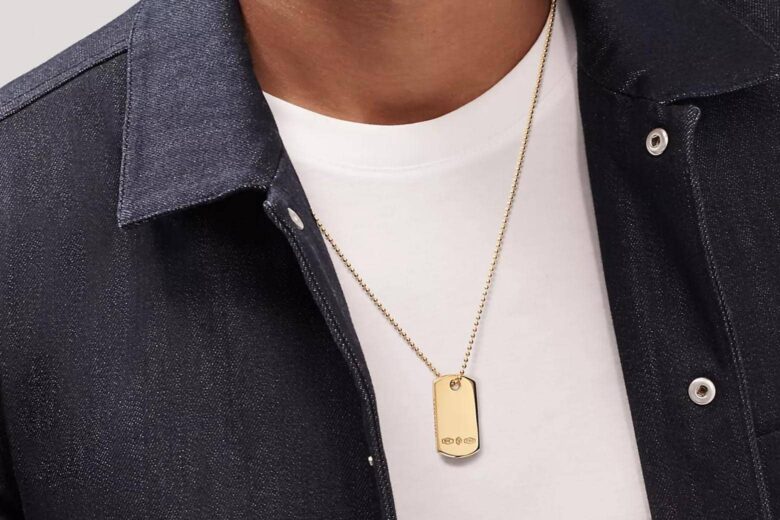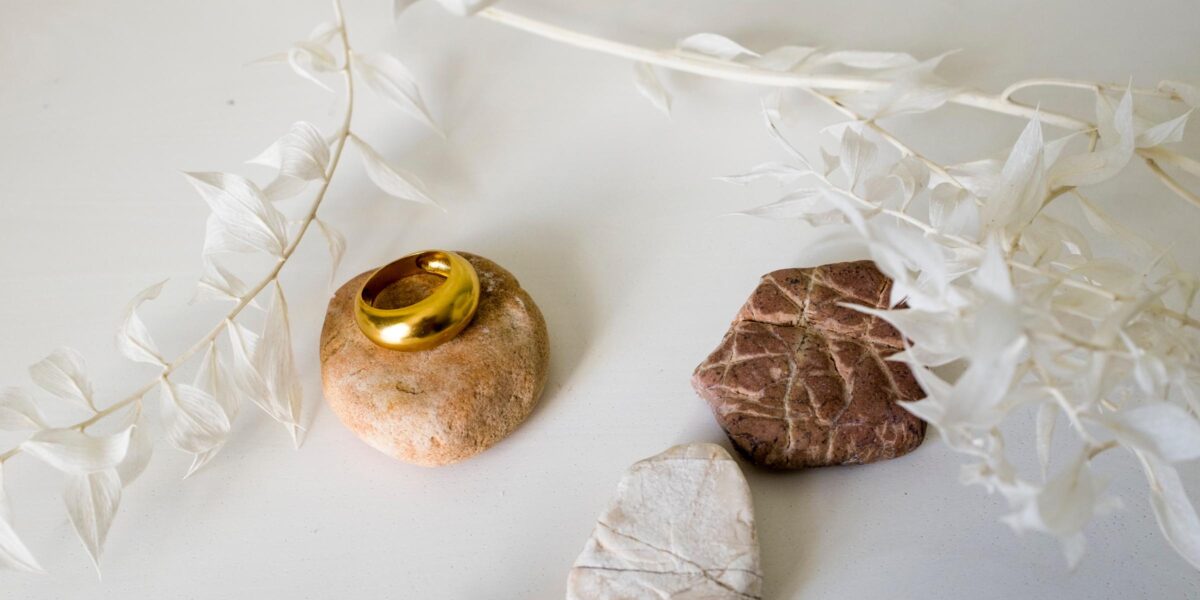Ok, so the name is pretty misleading, but that doesn’t mean that there isn’t a case to be made for gold filled jewelry—that being durability. While gold filled jewelry may not be filled with gold exactly, it is a great affordable-but-quality alternative to solid gold.
Regulated by the Federal Trade Commission of the United States, gold filled jewelry adheres to a strict set of guidelines, ensuring a certain percentage of real gold is used.
Not only does this guarantee an inherent value but it also makes gold filled jewelry the most durable and long lasting. Used by some of the best jewelry brands, gold filled pieces are less susceptible to tarnishing, making them a stellar choice for all day, everyday wear.
What is gold filled jewelry?
Also known as rolled gold, gold filled refers to the specific process by which gold is mechanically bonded onto the base metal using heat and pressure. This is very different from the more contemporary method of electroplating. And whilst it is slightly more intricate, time consuming and costly, the time-honored method produces a solid gold-alternative that is unrivaled when it comes to quality and durability.
Other distinguishing characteristics of gold filled pertain to how it is standardized. Regulated by the Federal Trade Commission of the United States, all gold filled jewelry must have a percentage of pure gold that weighs 5% or more of the total weight of the metal.
Made simple: the gold should comprise at least 1/20th of the total weight of the jewelry piece. On top of this, the base metal must be mechanically bonded to “real gold”, meaning that the gold used must be 9K or more.
When it comes to the regulation of which base metal can be used, there is no standardization. Gold filled jewelry could contain anything from brass to sterling silver. This makes it more important to investigate which base metals have been used, as the base metal will affect the quality and value of the piece.

How is gold filled jewelry made
Unlike other gold alternatives, gold filled jewelry doesn’t use electroplating or flash plating. Instead, a layer of gold is mechanically bonded onto a base metal (usually brass) using heat and pressure. By law, gold filled jewelry must contain at least 5% real gold, however, there are three different ways in which to layer and portion it.
Single clad
The whole 5% of gold is layered on one side of the base metal.
Double clad
The 5% of gold is split between the two sides, with a thinner layer (2.5% of the total weight) of gold on both sides of the base metal.
Wire clad
An even thinner layer of gold is coated around the whole wire, making up 5% of the total weight of the metal.
Is gold filled real gold?
Although gold filled isn’t pure gold, it still consists of real gold. In the United States, pure gold (24K gold) is considered too soft to work with, therefore almost all gold jewelry contains some kind of base metal to make it stronger. The value of gold jewelry is then determined by how much gold it contains, with anything above 9K still considered to be real gold.
Read our in-depth guide to gold purity to understand gold karats.
Solid gold is the highest quality form of gold used for gold jewelry, but it is also the most expensive. More affordable gold alternatives include gold vermeil, gold filled and gold plated jewelry.
And even though solid gold is not used throughout the jewelry, these alternatives still use “real gold” layered onto other base metals. Solid gold is made up of at least 5% real gold, making it one of the best quality solid gold alternatives.

The differences between gold filled, gold plated, gold vermeil, and solid gold
Of course, if you have money to invest, nothing beats solid gold jewelry.
Because pure gold (24K gold) is not durable enough, most high end jewelry is made from solid gold—a combination of pure gold and other metals. The karatage of solid gold indicates what percentage of pure gold it contains. 18K Gold jewelry is 75% pure gold, while 14K gold is only 58% pure gold. And although you get different karats of gold, it must be 9K or higher to be considered “real gold”.
If you don’t have loads to invest, gold filled jewelry and gold vermeil are your best quality alternatives. Almost all gold jewelry includes other metals, but the biggest difference between solid gold and these alternatives is that, while solid gold is consistently gold throughout, gold filled and gold vermeil are both gold coated base metals.
So what’s the difference between gold vermeil and gold filled jewelry? Both are regulated and both must include real gold (10K or higher)—but in different ways.
While gold filled jewelry is regulated according to the percentage of gold included (must be at least 5% of total weight), vermeil is regulated according to the thickness of the gold layer (at least 2.5 microns) and the base metal used (only sterling silver.) Another difference is that gold is mechanically bonded on gold filled jewelry using heat and pressure, while gold vermeil involves a more affordable and modern process called electroplating.
Gold plated jewelry is not regulated and is usually flash plated with a very thin (0.5 microns thick) layer of gold. This means that it is likely to tarnish or wear off in a matter of months or weeks of heavy use. It is also often made from cheaper base metals, such as nickel, which can cause allergic reactions.
Does gold filled jewelry tarnish?
Gold filled jewelry will eventually tarnish after heavy use, although it takes much longer to do so than other gold plated pieces. How quickly gold jewelry tarnishes will depend on how thick the layer of gold is and what base metal is used.
Gold filled jewelry must consist of at least 5% real gold, which means that the layer of gold is much thicker than gold plated jewelry. Gold filled jewelry with sterling silver as a base metal is also a lot less susceptible to tarnish than gold filled jewelry with other base metals.
Is gold filled jewelry waterproof?
Gold filled jewelry is not entirely waterproof, but it is a lot more durable than other solid gold alternatives.
Unlike gold vermeil and gold plated jewelry, gold filled jewelry is made by mechanically bonding gold onto a base metal using heat and pressure. Although this process is a lot more timely and costly than electroplating, gold filled jewelry will not oxidize or corrode when immersed in water. This means that you can safely wear your best earrings, designer necklaces and everyday bracelets to the gym or in the shower.
Is gold filled jewelry hypoallergenic?
Yep, gold filled jewelry is hypoallergenic. Even though the base metals used for gold filled jewelry aren’t regulated, the amount of gold present in gold filled jewelry is regulated. This means that the layer of gold is thick enough to protect the skin from whatever base metal is found beneath it.

Price: What is gold filled jewelry worth?
Gold filled jewelry and gold vermeil are both considered good quality affordable alternatives to solid gold, while gold plated jewelry is the cheapest and least durable alternative (depending on the thickness of the gold layer).
Both gold filled jewelry and gold vermeil are a lot more affordable than solid gold, but gold filled jewelry is slightly more expensive than gold vermeil.
Why?
Gold filled jewelry uses a time honored method of mechanically bonding gold onto other base metals using heat and pressure. This process is more intricate and takes more time than electroplating—a more modern technique used to manufacture gold vermeil. This makes gold filled jewelry more expensive but also more durable, especially if you’re one to shower with your jewelry on.
How to care for gold filled jewelry?
Gold filled jewelry may be the most durable alternative to solid gold, but it isn’t immune to tarnishing. By looking after your gold filled jewelry correctly, you can extend its lifespan by years or decades.
While you can shower and swim with gold filled jewelry, it’s better to keep it as dry as possible. This includes lotions and sweat, so it’s best to remove all gold filled jewelry while exercising or moisturizing. To protect your gold jewelry against scratches, remove it during vigorous activity, such as moving furniture.
We also recommend keeping it in its own silk bag whilst traveling so that it doesn’t rub against other jewelry.
Frequently asked questions about gold filled jewelry
Gold filled jewelry is real gold that has been mechanically bonded onto another base metal using heat and pressure. Gold filled jewelry is regulated by law, meaning that it must be made up of 5% gold that is 10K or higher. So while gold filled jewelry isn’t 100% real gold, it does contain a regulated percentage of real gold.
Gold filled jewelry is of a much higher quality than other gold plated jewelry. Regulated by the Federal Trade Commission of the United States, 5% of gold filled jewelry must be real gold. The process by which the gold is mechanically bonded onto the base metal also makes it a lot more durable and waterproof than other solid gold alternatives.
Gold plated jewelry is more affordable than gold filled, but gold filled is typically of higher quality. The biggest difference being that gold filled jewelry is regulated, while gold plated jewelry is not. By law, gold filled jewelry must be at least 5% real gold, while gold plated jewelry can be flash plated with an extremely thin layer of gold.
Gold filled jewelry is not worth nearly as much as solid gold jewelry, but it is usually worth more than gold plated jewelry. Regulated by law, gold filled jewelry must contain at least 5% real gold. And the process by which it is mechanically bonded onto the base also makes it more durable and valuable than other solid gold alternatives. Read our guide to gold filled jewelry to learn more.










